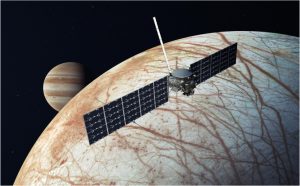In an editorial published in December 2023, the editor of Science magazine, H. Holden Thorp, looked ahead to the coming year with concern for the future of science. Since the outbreak of the COVID-19 pandemic, Americans’ confidence in science has dropped 16 points to 57%; conspiracy theories and anti-science beliefs are on the rise; Argentina has a new president who campaigned on dismantling his country’s leading scientific institution; and the US faces an election that could be won again by Donald Trump, whose previous term left a very negative mark on science in the world’s leading power. Amid these great unknowns, here are some predictions that could mark milestones in science in 2024.
The climate battle will continue
In the year just ended, the hottest on record, we came within just four hundredths of a degree of the lower limit for global warming set by the 2015 Paris Agreement, an average annual temperature of 1.5°C above pre-industrial levels. The projections for 2024 are alarming: scientists estimated years ago that we could exceed this threshold in 2024, with the contribution of the El Niño weather phenomenon. Experts now believe that exceeding this limit is inevitable, and that efforts must focus on minimising the magnitude and duration of this overshoot.

In this context, the commitment made at the COP28 climate summit in Dubai to transition away from fossil fuels will be put to the test in 2024. This year’s COP29, to be held in Azerbaijan in November, will assess progress on pledges made at COP28 to triple renewable energy capacity, increase energy efficiency, cut methane emissions, reduce emissions from air conditioning, increase adaptation financing, address irregularities in voluntary carbon offset markets, and set emission reduction targets for food production.
New technologies against disease
In December 2023, Nature Medicine asked several leading researchers about the most promising clinical trials in the new year. Among the most eagerly anticipated are some innovative technologies. While last year saw the approval of the first CRISPR gene-editing therapy to treat blood cells ex vivo—outside the body—in 2024 we will be watching for the results of the next step in this direction, the first in vivo gene-editing trial, which will treat familial hypercholesterolaemia.

Another trial is applying artificial intelligence (AI) to the early diagnosis of lung cancer, which could halve the time to detection. Also in 2024, we will see advances in vaccines for HIV and malaria, a stem cell-based treatment for Parkinson’s disease, a drug for brain metastases from breast cancer, and an immunotherapy for melanoma, among other trials.
Looking spaceward
Undoubtedly the most anticipated space mission of not just 2024, but the last half century, will be Artemis 2, which will take four NASA astronauts—including a woman and an African-American man—around the Moon, the first manned return to Earth’s satellite since Apollo 17 in 1972. It will also be the first human excursion beyond low Earth orbit since the cancellation of the Apollo programme. The mission will follow Artemis 1, which carried an unmanned Orion capsule into lunar orbit in 2022. NASA is sticking to its target of launching the mission in November 2024, but industry analysts say it could be delayed if damage to Orion’s heat shield during Artemis 1 forces a major redesign.

Future missions to return humans to the lunar surface could also be delayed from current plans, depending on the progress of the Starship spacecraft from tycoon Elon Musk’s company SpaceX, as Artemis 3 will use a version of this super heavy-lift launch vehicle to land on the Moon. However, Starship’s two orbital flight attempts in 2023 failed, so we will have to wait for the results of its third test flight, scheduled for the first quarter of 2024. Also in the private sector, the New Glenn launch vehicle from Blue Origin, owned by tycoon Jeff Bezos, should finally make its debut in orbit.
Otherwise, there will be no shortage of activity in space in the coming year. In addition to Artemis 2, the Moon will be a prime target, with several probes from NASA, the space agencies of China and Japan, and private companies all eyeing our satellite. Among the missions to other destinations, NASA’s Europa Clipper, scheduled for launch on 10 October, will orbit Jupiter to study its moon Europa, one of the Solar System’s most promising worlds for the possible existence of life.
AI unknowns
Tools such as ChatGPT have popularised the use of AI, which we already use in a number of applications without realising it, but which has now crossed the threshold into more recreational uses. In 2024 we will have GPT-5, a new iteration of the famous system, which will have to compete with Google’s new Gemini, which is announced to have unique multimodal capabilities to convert a range of input types (text, images and audio) into any type of output. But while AI systems continue to advance and there are fears of their illicit exploitation, regulations are beginning to take shape: after the European Union’s pioneering step, we expect the publication of the United Nation’s General Guidelines in 2024, which should serve as a framework for international regulation.

Comments on this publication